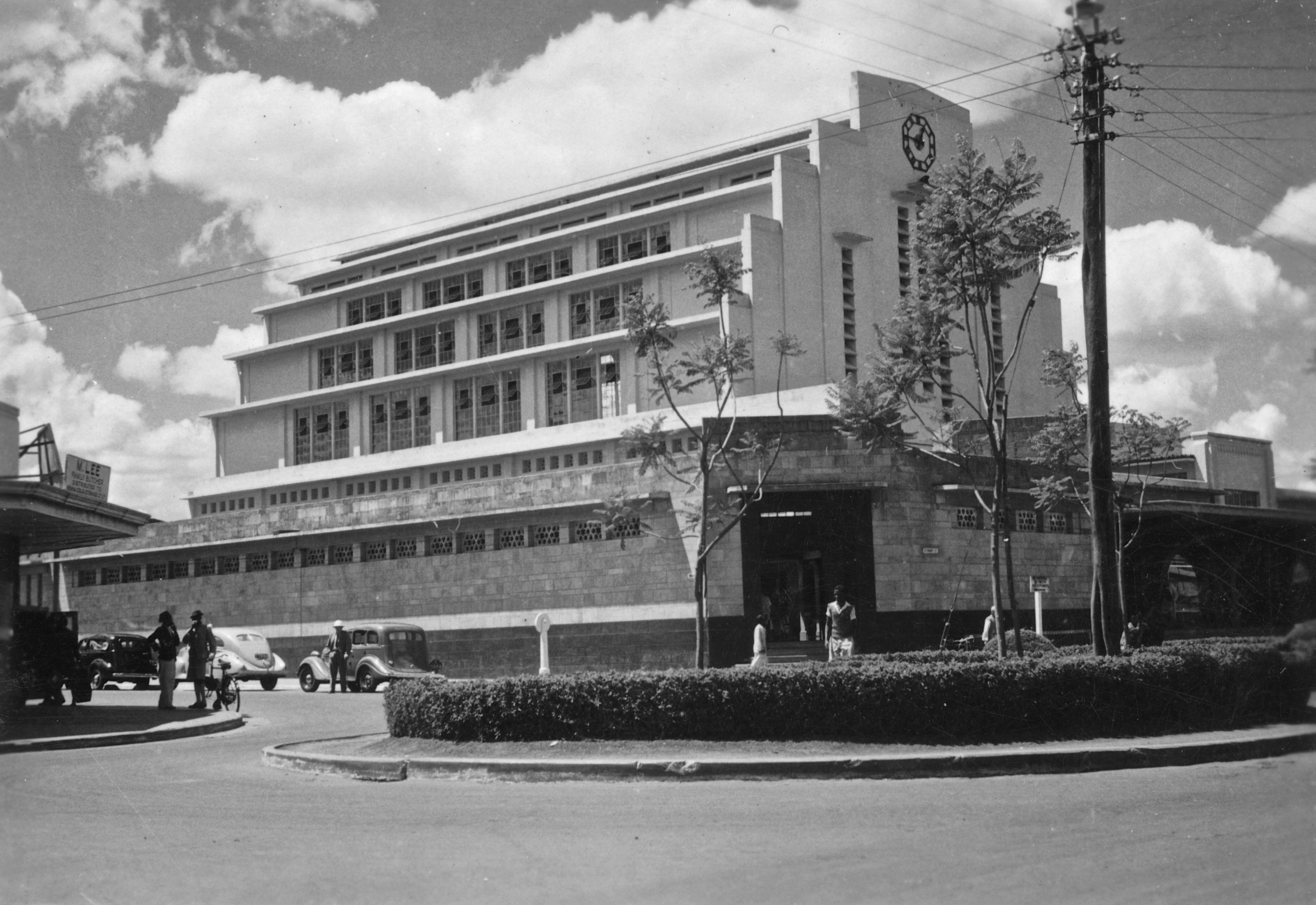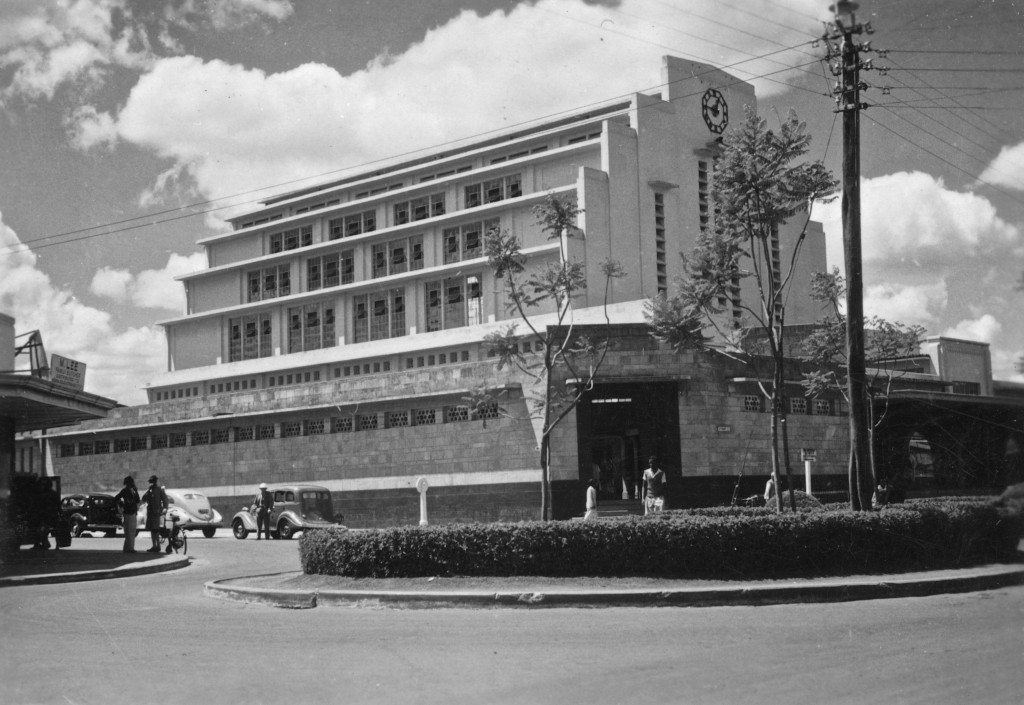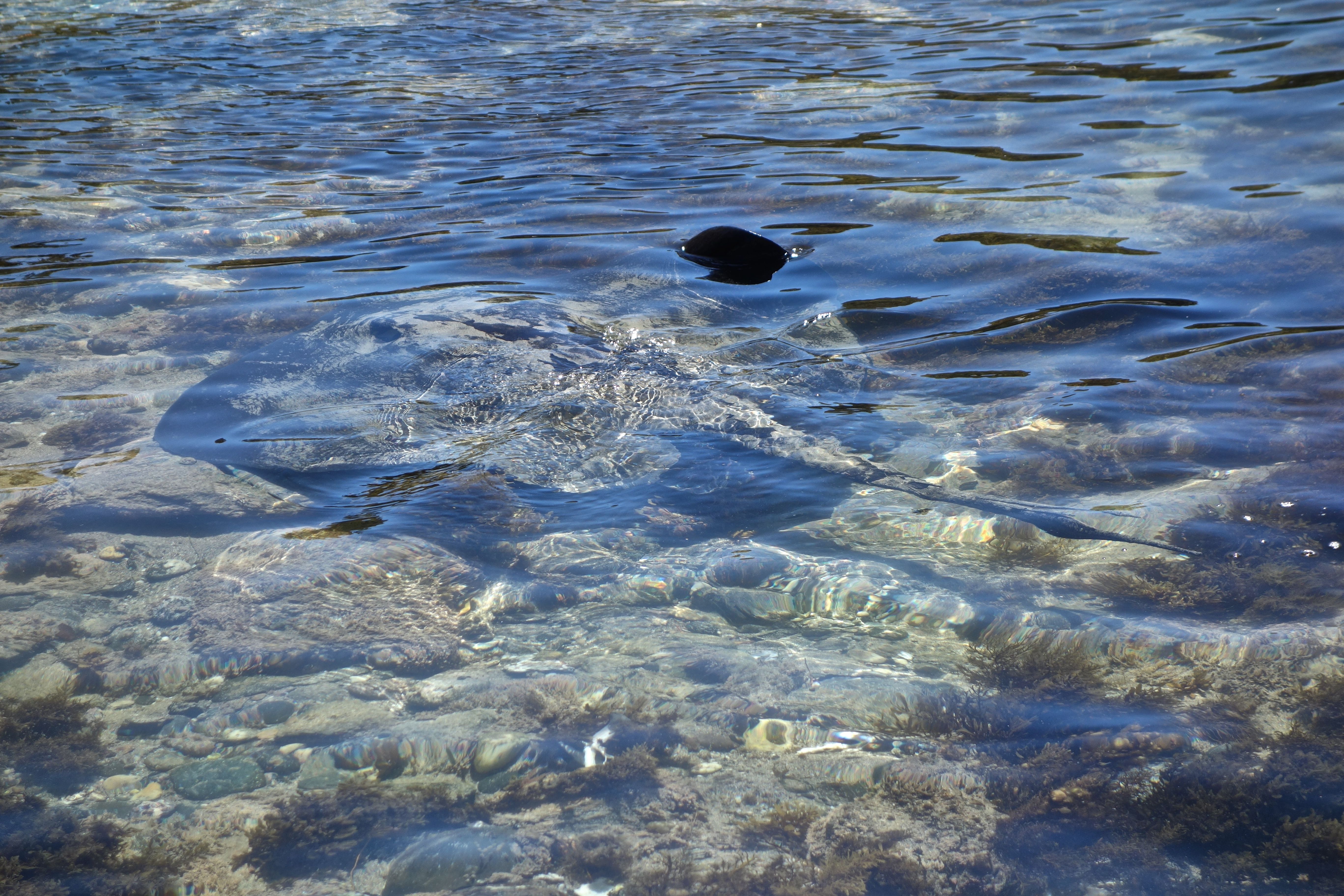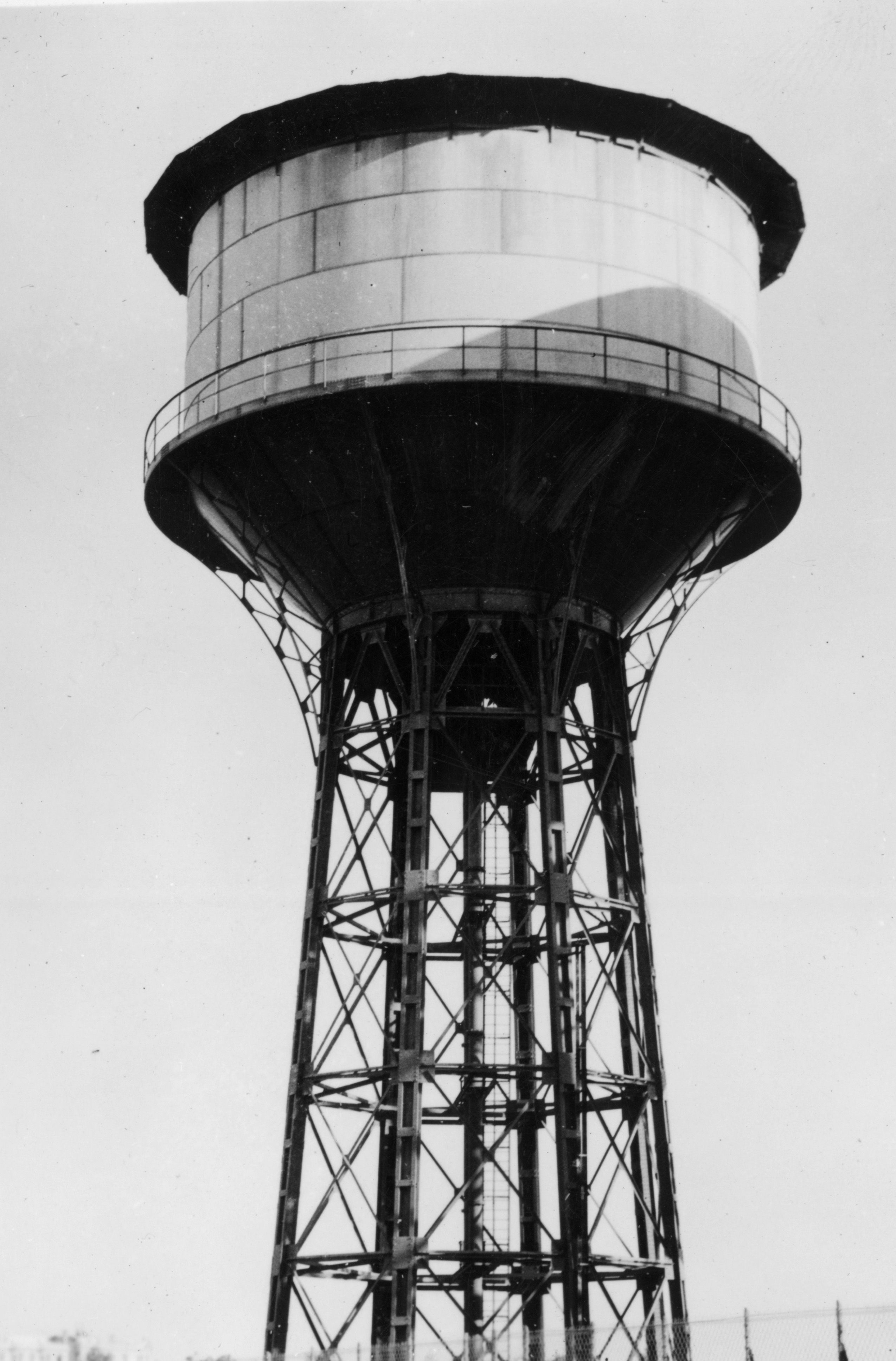The word ‘angular’ makes me think ‘Art Deco’, the popular visual arts style of the 1920s and 30s that embraced the hard edges of industry, machines and man-made structures rather than the soft, curving, natural lines of the previously popular ‘Art Nouveau’ style. Art Deco buildings are recognisable by their geometric, often symmetrical, forms and decorations: repeated lines, zigzags, steps, and ziggurat shapes. Here’s a photo from Dad’s WWII collection from 1941/42, showing the covered market in Nairobi, built in 1932. It’s now called the City Market.
The City Market building in central Nairobi has the classic features of Art Deco architecture: symmetrically stepped walls and straight lines at every turn – even the clock is octagonal. Well, that was in the 1940s; the clock is no longer there, as you can see in the photo below, taken in 2011.
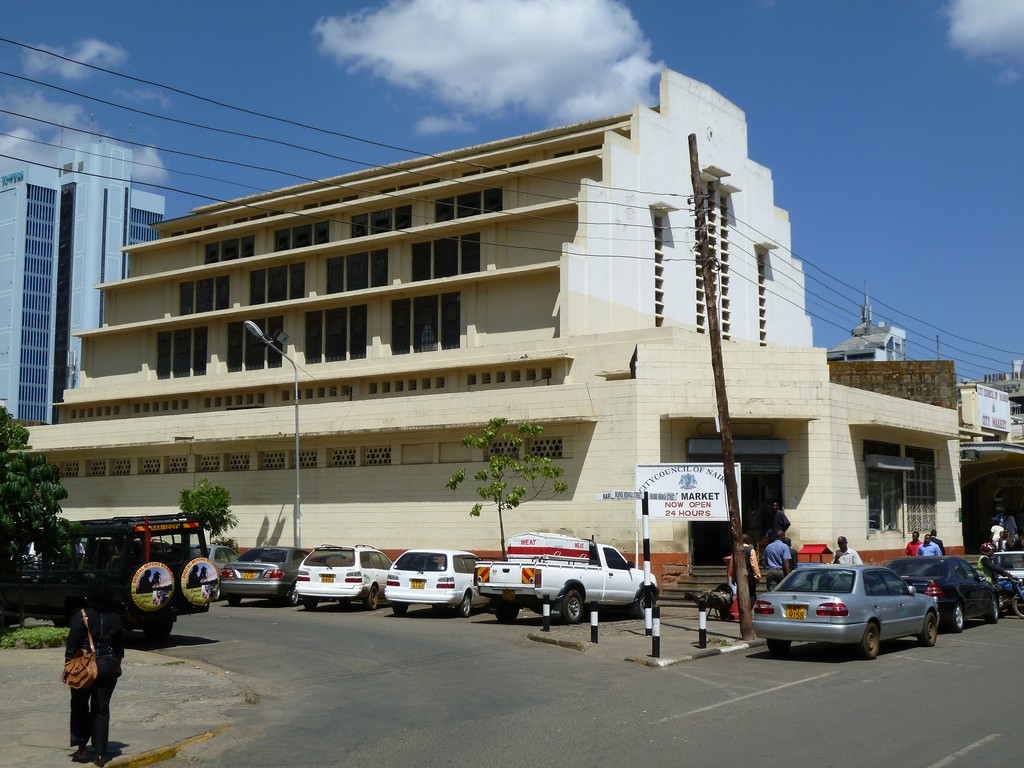
How quiet it was in the 1940s, with a neatly hedged roundabout and only a few cars parallel-parked beside the building. Images online of the City Market now, including the one above, show a lot of people and traffic, and angle parking to fit more in. Photos online of the interior are full of colour and activity, showing local people buying fresh food, particularly meat and fish, fresh flowers, handcrafts and souvenirs for the tourists.
Inside, it’s an open space where the windowed walls step inwards, with unadorned concrete arches supporting the vaulted ceiling. Pivoting windows on both sides allow air movement and cross ventilation (see an enlarged view of them in the header above), and the vertical strips of louvres allow hot air to escape through the higher openings and cooler air to enter at the bottom. It was ‘green’ architecture long before sustainability became so important. There’s an interesting site here with more photos, as well as plans and information about the energy-efficient design that keeps the building cool. It’s very interesting reading.
I have to admit that while I have a few items of Art Deco style inherited from my parents, it’s not my first choice of decoration or architecture. Give me instead the organic forms of Art Nouveau, the stylised vines whipping asymmetrically around doors and windows and up and down balustrades. Give me environmentally sustainable curves any day.
Thanks Daily Post photo challenge for the angular prompt.
*****

